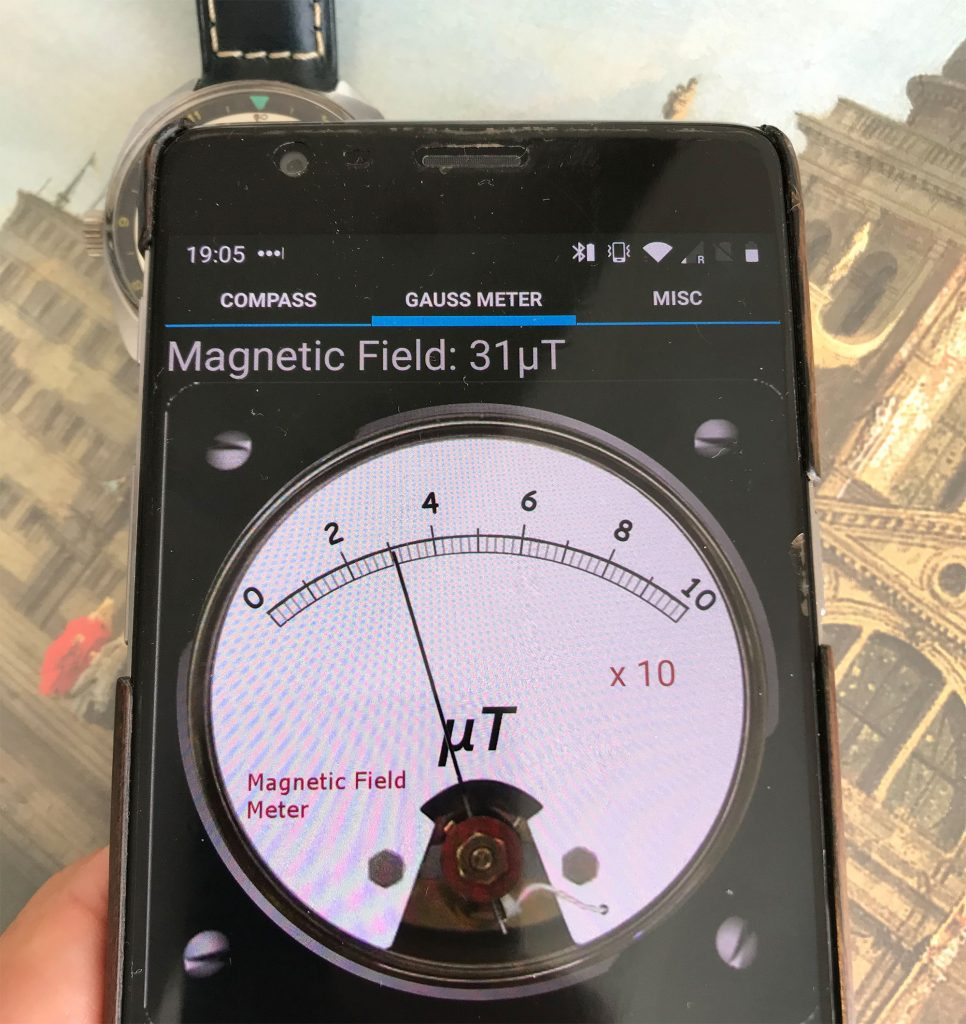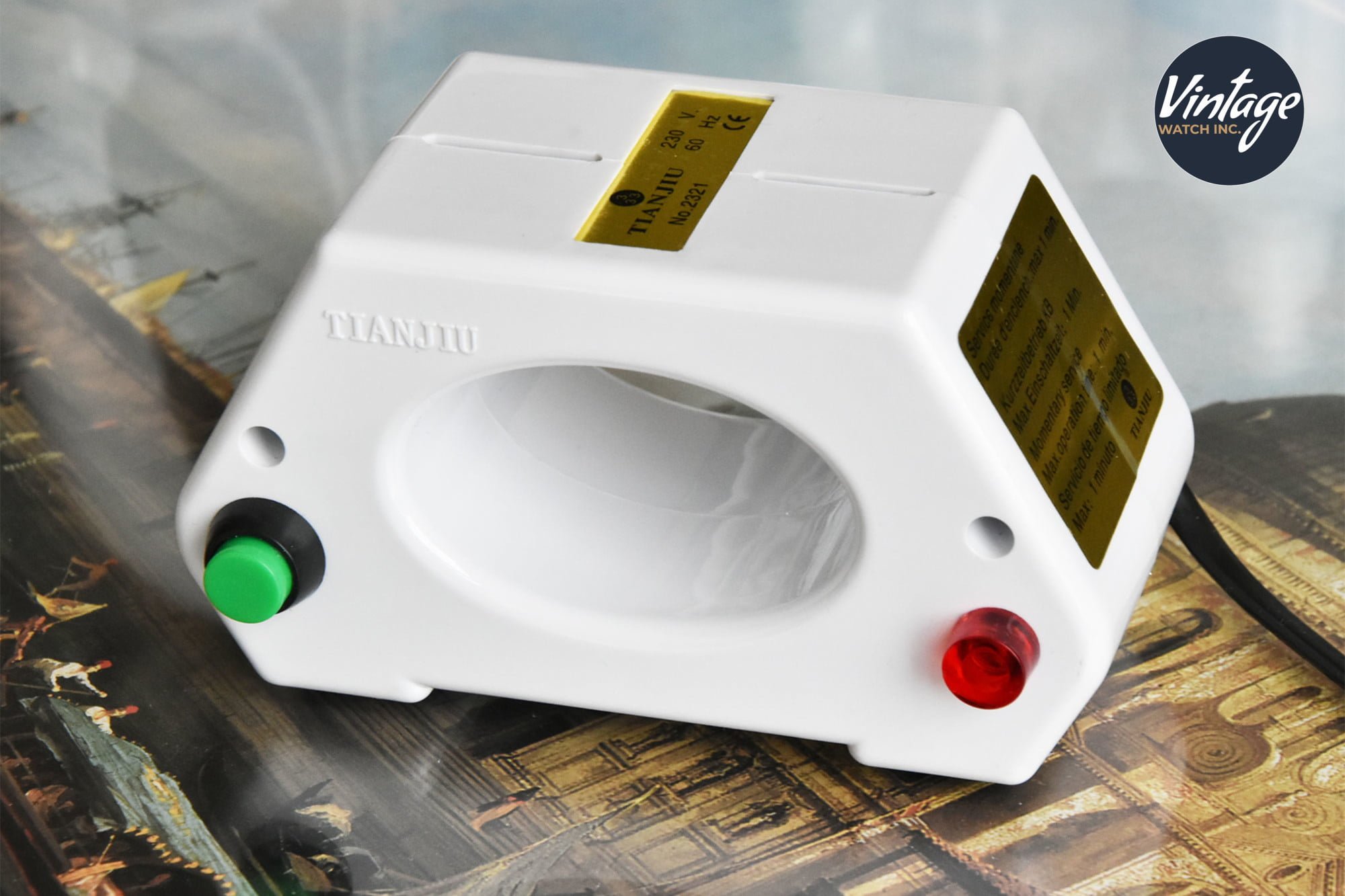Choosing the right watch for the occasion has always been important. If you’re going to a fancy dinner, or you’re going diving, or you’re going for a run, or you’re traveling internationally… you might choose very different watches for each situation. One thing that usually doesn’t come into consideration is whether or not you’ll be in the proximity of magnetic fields.
Not going into the water with a watch that isn’t waterproof, and not taking a pristine luxury watch mountain climbing are pretty obvious things to keep in mind, but when was the last time you took magnetic fields into consideration when choosing which watch to wear? Probably never, right?
Magnetic fields are all around us, but they’re usually easy to ignore. In fact, you don’t even know that they’re there most of the time. When we’re dealing with something engineered as precisely as a watch, with so many fine internal components that are made out of metal, it doesn’t always take much for a watch to become magnetized.
In this article, we’ll discuss why some watches get magnetized and how to detect it. Of course, we’ll also share our advice on how to demagnetize a watch.
Table of Contents
What is magnetization?
Magnetization is something that occurs when metal objects of certain types are brought within a certain radius of magnets. Magnets are all around us. They’re in speakers, they’re in medical equipment, they’re on our fridges. Not all magnets are created equal, so some of them are more likely to cause magnetization than others.
A speaker on the other side of the room, even if the magnet is more powerful, is less likely to cause magnetization issues with your watch than a magnetic bracelet that’s sitting millimeters away from your timepiece.
From reaching into your fridge, to doing a load of laundry, carrying electronics or resting your arm on a speaker, so many daily tasks can put our watches in jeopardy.
Why is magnetization bad for watches?
The major issue with a magnetized watch is that it simply won’t keep time accurately. Magnetic fields can cause your balance spring in particular to become magnetized, which will cause it to move ever-so-slightly more quickly, which can add up throughout the course of a day or a week. The discrepancy between the true time and the time your watch displays will vary depending on the degree of magnetization.
It’s possible that a watch arrives to you magnetized already, there are plenty of opportunities for it to encounter magnetic fields between the factory it’s made, the shipping crates, sitting near an electronics section at a store, and so on.
When you have a precise instrument like a wristwatch, with so many sensitive metal parts inside of it, it should come as no surprise that magnetization can be an issue – but it’s not the end of the world.
Some watches are protected from magnetization. This Vostok Amphibian, for example, has a special antimagnetic shield under its caseback:

Does magnetization ruin the watch?
It would take an extreme case of coming into contact with a very powerful magnet to cause permanent damage to a watch. The vast majority of magnetization issues in watches can be fixed easily. Many people keep up a regular routine of doing this to their watches if they’re often in contact with stronger-than-usual magnetic fields. Some collectors routinely demagnetize all watches that they receive by post.
How to tell if your watch is magnetized
There’s an app called LEPSI that can tell you if your watch is magnetized by holding your watch near your iPhone. It’s pretty incredible. It’s very sensitive, so even if the level of magnetization is very low, this app will still pick it up. For Android, there are also several apps that can help you determine whether your watch is magnetized, for example Gauss Meter.
Another way to detect magnetic energy within your watch is by using a good old fashioned compass. Place your compass flat on a table and let it sit until it’s completely still. Now, bring your watch up closer to it. If the hand of the compass starts to move, then it is picking up magnetic energy from your watch, therefore your watch is magnetized.
How to demagnetize a watch
The good news is that it’s not expensive to demagnetize a watch. It only takes a few minutes. You could take it in to a watch shop to have them do this for you, but a watch demagnetizer usually costs less. If you end up needing to demagnetize your watch more than once or twice, this tool will pay for itself.
What’s the best watch demagnetizer?
You’ll see two popular models when shopping for a demagnetizer for your watch. There’s a cheaper, more basic one that’s often blue, red or purple colored. It has a small switch, a small light, and a cord that plugs into the wall. There’s also a battery-powered version. The body of the unit is just a flat rectangle. It’s not the greatest device on earth, but some people say that it can get the job done. I have one with a battery and never managed to demagnetize a watch with it.

The other popular model is white with a hole in the middle of it for the watch to pass through. This one is a bit more expensive, but still more economical than taking your watch to a shop one or two times. It has a switch, a light, and also plugs right into the wall. It’s definitely the superior unit of the two and it’s the one I use. It costs $30-$40 and is available both from Amazon or . As usual, if you order from China, get ready for a long wait, so try to find a seller in your country.
How to use a watch demagnetizer
Assuming you got yourself the white one, it’s extremely easy to use it. Hold the watch in your hand 50 cm from the demagnetizer and press the green button. The demagnetizer will be activated and will start buzzing softly (you need to keep the switch on with your hand). Slowly approach the watch, insert it into the tunnel, hold it in there for 10-15 seconds while rotating it. Slowly remove the watch from the tunnel and take it 50 cm away from the demagnetizer. Release the button.
Demagnetizing a watch: step by step guide
For this article, we are going to use the white demagnetizer on a random watch from my collection, an early dial Poljot Sturmanskie 3133 chronograph (more info about Poljot chronographs):

Service history for this watch is unknown and it was recently shipped to me from Russia. It may have been scanned during shipping, so I suspect this Sturmanskie may be magnetized.
Step 1: check timegrapher results
To begin with, let’s see how the watch runs out of the box. I switched on my timegrapher (learn how to use a timegrapher here) and got the following results:

As you can see, the precision is far from satisfying at around +100 seconds/day. There’s some beat error and the amplitude is not very high at 194°. Let’s see if the watch got magnetized during transport.
Step 2: check if the watch is magnetized
I will be using my Android phone equipped with an app called My Magnetic Instrument. First, I check the current magnetic field in the Gauss meter tab:

Then I place my phone over the watch to see if the magnetic field changes:

As you can see, the Gauss meter shows 31 μT instead of 41 μT when the phone was far from the watch, evidencing a change in the magnetic field. Seems like the watch is indeed magnetized.
Step 3: demagnetize the watch
I processed the watch through the demagnetizer as described above (press the button, slowly put the watch inside, rotate during 10-15 seconds, take the watch out, release the button):
Step 4: make sure the watch is demagnetized
Now we need to verify that the watch is actually demagnetized using the Android app:

The Gauss meter now shows 40 μT near the watch. I think we can assume that the watch is demagnetized.
Step 5: see if there’s a change on a timegrapher
Let’s put the demagnetized watch back on the timegrapher:

Interesting results. We can notice improvements over all metrics: accuracy is significantly better at around +50 seconds/day instead of +100. Furthermore, amplitude slightly increased to 211° vs 194° and it looks like the beat error also got better.
This looks too good to be true but I assure you I didn’t tweak anything here and performed this test on a watch that I picked randomly from the latest arrivals lot. Obviously, results will be different each time because there are so many factors involved in how well a watch movement performs, sometimes you won’t see any improvement at all. Demagnetizing will not magically repair your watch that is in need of a service. On the other hand, it may definitely restore its functionality if it’s been affected by magnetic fields during transport.
What’s next?
It’s not a bad idea to check your watch at the end of the day. Check to make sure it’s keeping accurate enough time, and check to see if your tools are picking up any magnetization from your watch. If so, you know what to do!
Magnetization is quite a common issue to come across for most watch collectors and enthusiasts. Even though you probably won’t be spending enough time in large enough magnetic fields, and not all watches are equally susceptible to magnetizing, sometimes they do get magnetized, and vintage timepieces are particularly prone to magnetization. Either way, now you know the ins and outs and how to demagnetize a watch.
Vintage Watch Inc
Dennis is the founder and editor of Vintage Watch Inc. Passionate about Soviet and Japanese vintage timepieces and a finance professional by day, he proudly wears a Seiko Pogue with his suit.







Leave a Comment, Ask a Question